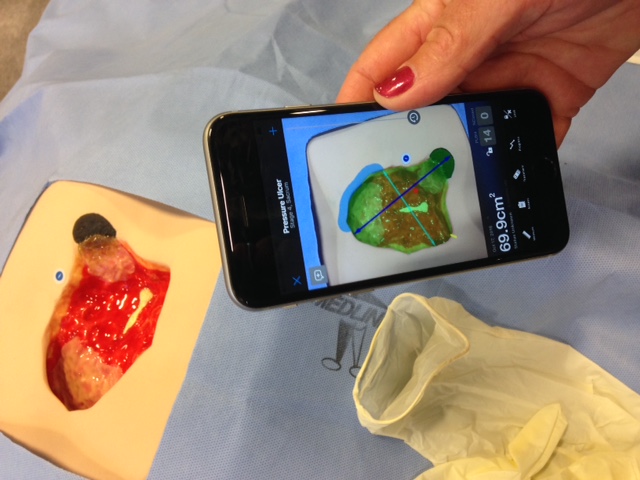Nash UNC Health Care is continuing its effort to bring cutting-edge technology to the hospital.
Through a recent partnership with a Maryland-based medical imaging and data analytics company called Tissue Analytics, which is dedicated to revolutionizing wound care, Nash UNC Health Care has adopted new state-of-the-art wound imaging technology to its outpatient Wound Care Center.
The Wound Care Center is reportedly one of a select few in North Carolina that specializes in treating chronic or non-healing wounds, which are defined as sores or wounds that haven’t significantly improved from conventional treatments. Hospital officials said non-healing wounds are associated with inadequate circulation, poorly functioning veins and immobility, amputations in some cases and a lower quality of life.
Joshua Budman, co-founder and chief technology officer of Tissue Analytics, which was started in 2014, said Nash UNC Health Care has become one of the biggest users of the wound imaging technology. In the past, Budman said there has been too many inaccuracies and mismeasurements with wounds measured by a standard ruler.
Rulers produce a 45 percent error rate in wound measurements, which makes it difficult for clinicians to accurately judge healing progress, Budman added.
“The staff at the Nash Wound Care Center are extremely friendly and caring for their patients,” Budman said. “These qualities, combined with their commitment to quality, make them an ideal user of our technology. We saw how poorly chronic wounds were being documented and specifically how they were being measured. We’ve gone to develop a set of advanced imaging algorithms that has allowed clinicans like Nash to automatically measure the size and composition of wounds.”
Wanda Sohn, nurse manager at Nash Wound Care Center, said the new technology has allowed Nash to photograph wounds and automatically derive the rate at which a wound is healing. She added it also has allowed the hospital to be in better compliance with the Health Insurance Portability and Accountability Act law, because in the past Nash used a digital camera to download wound images that Sohn acknowledged wasn’t always the best way of safely keeping patients’ records.
Budman said the hope is for Nash UNC Health Care and Tissue Analytics to utilize mobile technology to create an interconnected wound healing network across the Charlotte region.
“When doctors, nurses or wound healing specialists make treatment decisions, they make it based on progress of the wound,” he said. “What is happening now, before our system was used in a facility like Nash, doctors were assessing patients’ progress based on inaccurate metrics and poor data. We’re giving places like Nash better data, but also a better way to visualize that data, so doctors now can make better-informed and accurate decisions for patients in terms of what treatment to use.”







